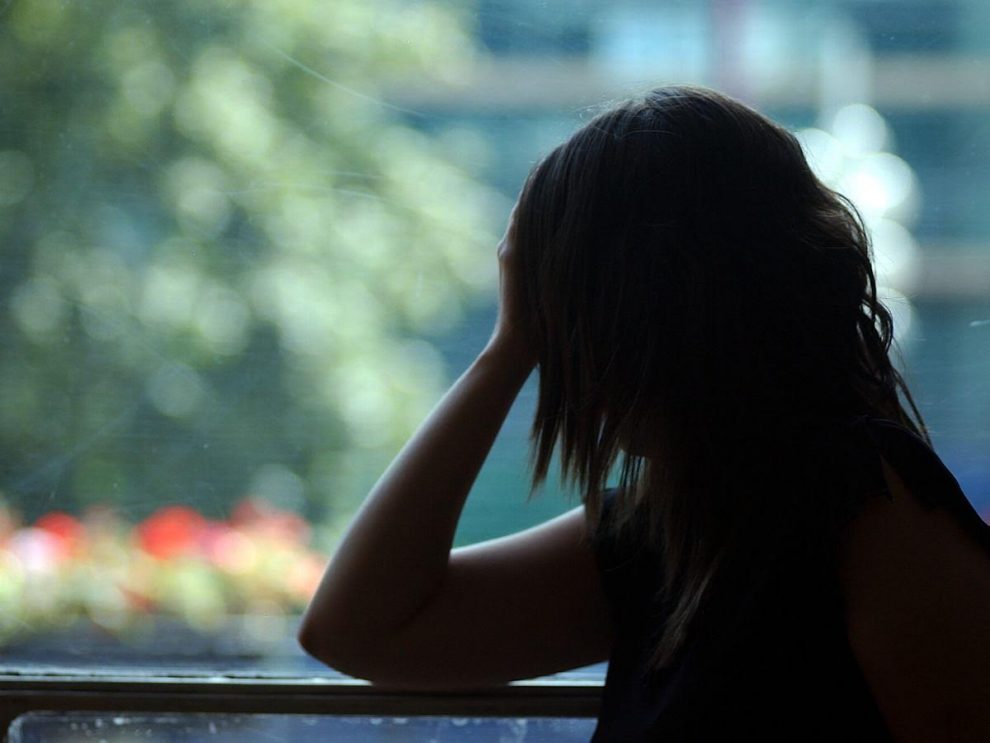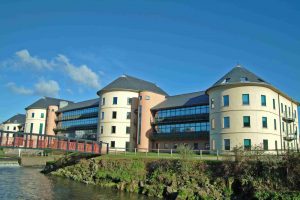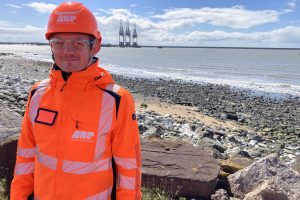A HARROWING report into the sexual exploitation of children in care, some from west Wales, has identified a string of failures in the social care system.
The Independent Inquiry into Child Sexual Exploitation published its final report this Tuesday (Feb 1).
The main body of the report is 193 pages long. It is accompanied by links to extensive evidence given by survivors, their families, senior social workers, and police forces.
The report focused on Swansea. There were also victims from St Helens, Tower Hamlets, Durham, Bristol, and Warwickshire.
The Inquiry chose those areas because they have never been the subject of well-publicised investigations of child sexual exploitation by networks.
It concludes that several police forces and councils systematically under-report child sexual exploitation to avoid being labelled as “another Rochdale” or “another Rotherham”.
Resources devoted to shutting down “county lines” mask the extent of organised child sexual exploitation.
Concerning Swansea, the Inquiry heard there were “no data” to suggest sexual exploitation by networks or gang-related child sexual abuse in the area.
That claim was wrong.
Evidence presented to the Inquiry, which should have been identified by the police, showed the presence of organised abuse by networks of abusers.
South Wales Police subsequently acknowledged “there is a likelihood that there are organised criminal networks that we haven’t discovered“.
Another local authority, Tower Hamlets in London, applied a restrictive definition of organised child sexual abuse and conceded that just because such abuse was not recorded didn’t mean it was there.
EXTENSIVE FAILURES
The report identifies extensive failures by local authorities and police forces. Those failures’ consequences mean authorities are struggling to keep pace with the changing nature of sexual exploitation of children by organised networks of abusers.
It says children are being sexually exploited by networks in all parts of England and Wales in the ‘most degrading and destructive ways’.
Many exploited children were raped or sexually assaulted repeatedly for months or even years.
The Child Sexual Exploitation by Organised Networks report noted there appeared to be a flawed assumption that child sexual exploitation was decreasing, when in reality it has become more of a hidden problem, increasingly underreported when only linked to other forms of criminal behaviour such as county lines.
During the public hearing, the Inquiry heard harrowing evidence of child sexual exploitation by networks, including evidence concerning more than 30 children and young people and the institutional response to exploitation of them, as well as victims and survivors, who described their experiences between 2003 and 2011.
While it is widely recognised that alcohol, drugs, and violence are often used as a means to groom and coerce children, the report finds that perpetrators are finding new ways, including through mobile phones, social media and dating apps, to groom and abuse younger children.
As the Inquiry has heard in other investigations, some of the worst examples are where children – including babies and infants – are live-streamed for money, sometimes being sexually abused at the direction of the paying perpetrator.
THE LANGUAGE OF ABUSE
The report finds that professional language around child sexual exploitation has developed over many years, describing children as ‘at-risk’ despite clear evidence of actual harm.
Examples include children having contracted sexually transmitted diseases, children regularly going missing with adults who picked them up in cars late at night and children attending so-called ‘house parties’ organised by adults, where they are plied with alcohol and drugs before being sexually abused.
By any measure of common sense, those children were not “at-risk” of abuse but self-evidently suffering abuse that was inadequately recorded and acted upon.
The victims of abuse have had their names and details anonymised in the report to protect them. Their stark anonymity makes the description of the abuse they suffered even more disturbing.
CS-A372 was first raped in 2007 when 12 by a 16-year-old boy who was prosecuted and convicted of rape.
At 14, she described being forced to perform oral sex on more than 20 adult men. The abuse was filmed. Several men were charged, but the charges were later dropped.
She told the Inquiry how, a few months later, she was abducted by a group of men and held at gunpoint while being forced to perform oral sex on them. She was placed back in care and returned to a pattern of repeated self-harm.
The local authority concerned, despite those incidents, recorded her only as “at risk” of sexual exploitation.
FAILURE TO IDENTIFY PATTERNS OF ABUSE
None of the areas examined in the investigation kept data on victims’ ethnicity or alleged perpetrators’.
The report highlights that this makes it impossible to know whether any ethnic group is over‐represented as perpetrators of child sexual exploitation by networks.
It recommends that police forces and local authorities in England and Wales collect specific data – showing sex, ethnicity, and disability – on all known or suspected child sexual exploitation cases, including abuse by networks.
Worryingly, the report emphasises that too many victims of child exploitation are treated as offenders or somehow responsible for the harms done to them, whilst the perpetrators of child sexual exploitation are often not investigated or prosecuted.
The report concludes that more effort must be made to prosecute perpetrators effectively; the law should recognise the gravity of this particular form of abuse and its impact on children.
In Swansea, despite assurances from the police that no networks of child sexual abusers existed, the Inquiry identified instances of child sexual exploitation by organised networks, using the Inquiry’s definition.
For example, four individuals were described in an October 2019 report as “linked in one way or another to each other” and displaying “inappropriate sexual behaviour towards vulnerable young persons”.
There were also networks referred to in the case study of CS-A56 and in the case of CS-B319, referred to by the City and County of Swansea Council.
Those instances of exploitation by networks or groups should have been identified by the police and the local authority.
However, South Wales Police claimed there were no data to suggest sexual exploitation by organised networks, whether according to the Inquiry’s definition or at all, and “no data to support suggestions that there is a gang related CSE issue within the Swansea area”.
Detective Chief Superintendent Daniel Richards accepted in evidence that “there is a likelihood that there are organised criminal networks that we haven’t discovered” and that increased county lines activities meant there was an increased likelihood of sexual exploitation.

THE SWANSEA VICTIMS
Swansea Council reported 57 children identified as being at risk of child sexual exploitation and being monitored on its child sexual exploitation protocol in 2017/18, reducing to 39 the following year.
In the two years to March 2019, 106 children were referred because of sexual exploitation concerns and 92 children were discussed at multi-agency strategy meetings.
In the two years to March 2019, South Wales Police stated that they had recorded 74 Swansea incidents with a child sexual exploitation flag.
However, in the 2019 calendar year, only four ‘direct contact’ offences were investigated.
The case studies below refer to cases covered by the Inquiry and not to 2019.
CS-A302 disclosed sexual exploitation by multiple males, involving several rapes and sexual assaults, including while in out-of-area placements.
When she was 13, she was placed in a specialist residential placement out of the area, which was intended to reduce her vulnerability to sexual exploitation, and which appeared to result in positive outcomes.
CS-A56 was reportedly sexually exploited by organised criminal gangs in different parts of the country in 2018, aged 17. They were placed in a specialist leaving care placement outside of Wales, where continuity of support could be provided.
However, following her return to Swansea when aged 18, despite being given enhanced support, she was trafficked and sexually exploited.
CS-A221 was a 14-year-old boy in Swansea who, in 2019, was allowed by his parents to stay for lengthy periods at the home of a registered sex offender in another part of Wales, who groomed him.
The child’s social worker was unaware of concerns about the offender and did not complete checks because the offender was thought to be a vulnerable adult.
The child had not made any disclosures and refused a sexual health screening.
The offender was imprisoned for breach of a Sexual Harm Prevention Order.
CS-A24 was described as having had “sexual partners from the age of 11”.
Ms Julie Thomas, Head of Children’s Services at the City and County of Swansea Council, accepted that its paperwork had been “littered” with inappropriate language.
Although Detective Chief Superintendent Daniel Richards of South Wales Police told investigators that the language did not “sit easily” with him because it risked diminishing the victim status of children, he unbelievably referred to “risky behaviour meetings” and “children who have engaged in risky behaviour while missing”.
CS-A25 lived between relatives and was regularly missing, including on seven occasions between May and August 2018.
While missing, she was taken to events organised by adults and supplied with drugs. She also experienced several serious sexual assaults.
AUTHORITIES MINIMISE CHILD EXPLOITATION
Kim Harrison, head of abuse law and public inquiries at Slater and Gordon, represented the family of one of the children in care. While in care, their daughter had been abused repeatedly, and little or nothing was done to address the abuse by either police or the local authority concerned (Warwickshire).
Kim Harrison said: “This shocking report confirms that whilst the systematic grooming and sexual abuse of children by organised networks are widespread in England and Wales, the agencies charged with protecting our children are still failing to do so.
“The report demonstrates that police forces and local authorities are failing to recognise the scale of child sexual exploitation due to inaccurate and often non-existent data. So, despite all the media publicity about child sexual exploitation, this abhorrent crime is still being minimised, and children are left unprotected.
Agencies are denying the problem rather than facing up to it.
“Alarmingly, the report reveals that police and social services continue in some areas to persist with victim-blaming stereotypes and language. Child victims are still being criminalised. This needs to be addressed urgently.
“We welcome the recommendations made today.
“The Inquiry, however, needs to go much further in its final report.
“We need a transformation in attitudes in police and social services, much better multi agency working, a new national strategy to identify and tackle child sexual exploitation, and much more proactive use of the criminal law. The government needs to resource this properly.”
LAW AND GUIDANCE MUST BE TIGHTENED
The report makes six recommendations, including:
- The strengthening of the criminal justice system’s response by amending legislation to provide a mandatory aggravating factor in sentencing those convicted of offences relating to the sexual exploitation of children.
- The Department for Education and the Welsh Government should update guidance on child sexual exploitation. This should include identifying and responding to child sexual exploitation perpetrated by networks and improving the categorisation of risk and harm by local authorities and other institutions.
- Police forces and local authorities in England and Wales must collect specific data – including sex, ethnicity, and disability – on all known or suspected child sexual exploitation cases, including by networks.
Chair to the Inquiry Professor Alexis Jay said: “The sexual exploitation of children by networks is not a rare phenomenon confined to a small number of areas with high-profile criminal cases.
“It is a crime which involves the sexual abuse of children in the most degrading and destructive ways by multiple perpetrators.
“We found extensive failures by local authorities and police forces in how they tackled this sexual abuse.
“There appeared to be a flawed assumption that child sexual exploitation was on the wane; however, it has become even more of a hidden problem and increasingly underestimated when only linked to other forms of criminal behaviour such as county lines.”

















